Month: July 2024

As arms collectors, many of us have established fairly strict boundaries on our collections—most often out of financial necessity and available space in our homes— and we sometimes pass by interesting, and affordable, antique or vintage guns being offered for sale, because they don’t seem to fit within the confines of our collection. However, by taking a broader view and ultimately understanding the history of your period of interest, guns that, at first glance, don’t appear as candidates for inclusion in your collection may actually have a place in it. The secret is to know how to discern the history of a gun and to read the story that it can tell you.
While taking a break during a musical session in my former collection room (the late “Kriegszimmer”) some years ago, one of my pals looked around at the assemblage of military memorabilia and asked the rhetorical question: “If these things could only talk, what kind of a tale would they have to tell?” I was sitting next to a vintage rifle, so I pulled it out of the rack and said, “This one really has quite a history, and I can only imagine the stories that it could tell.” Taking this as a cue, the other guest musicians asked me to tell the story of this well-traveled rifle that had been born in one country, fought for another country and then fought for two more countries over a short span of only thirty years.
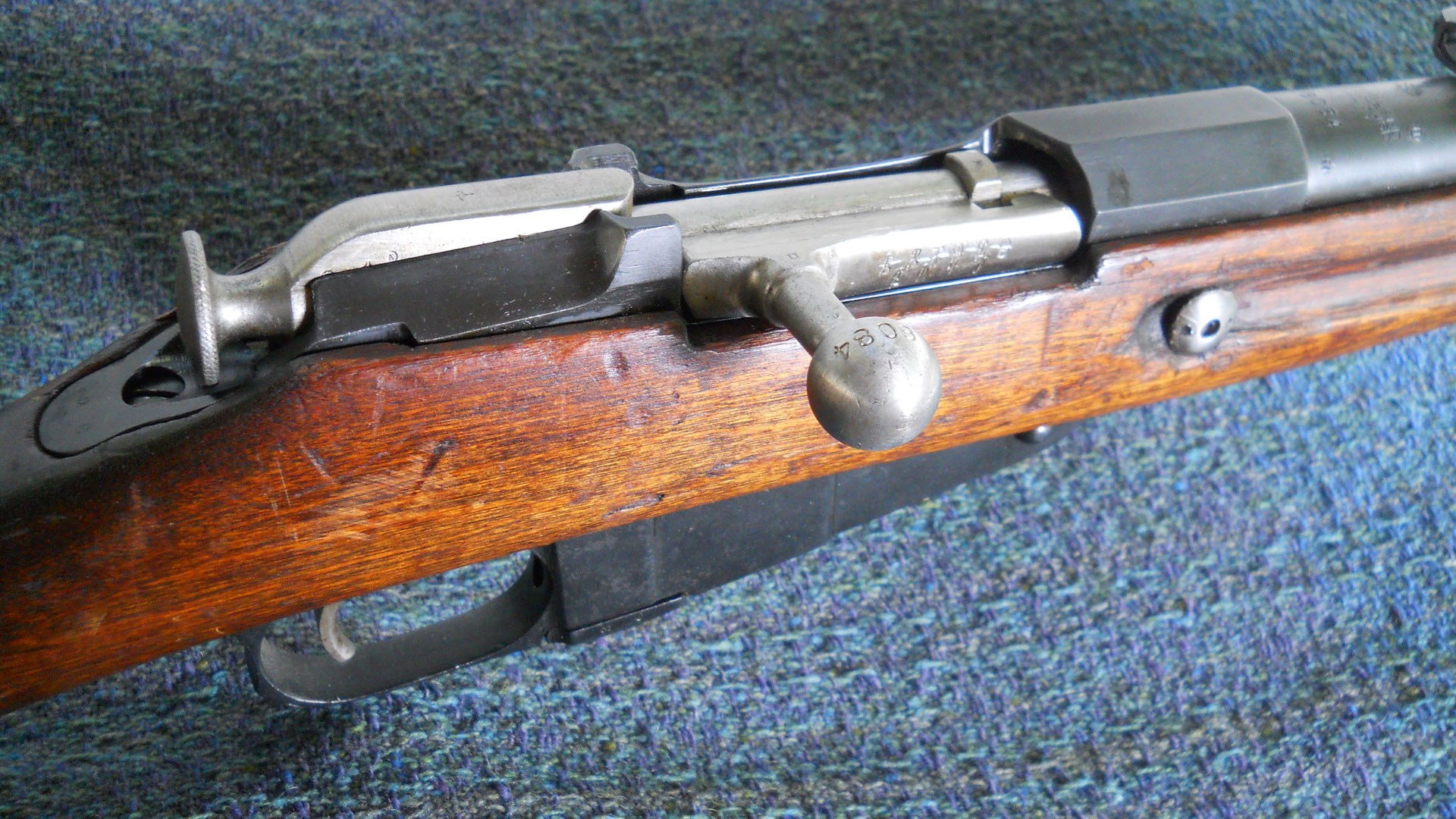
Facing a shortage of rifles in the early months of World War I, czarist Russia contracted with American arms manufacturing firms to provide Model 1891 Mosin-Nagant rifles for its troops. Courtesy of the author.
When Russia entered into World War I, its huge conscript army was already woefully short of service rifles. Its standard infantry shoulder arm was the “Russian Three-Line Rifle, Caliber 7.62 mm. (.3”),” or M1891, a five-shot, bolt-action rifle that was chambered for the 7.62×54 mm R rimmed cartridge. The “three-line” designation was a Russian term, meaning that the caliber of the bore was 0.3” in diameter, a “line” representing 0.1”—thus .30 caliber, or 7.62 mm. A Russian army officer, Sergei Mosin, designed the rifle in 1891, but a Belgian inventor, Leon Nagant, claimed to have developed certain features on it, so, at least in the United States, this rifle is commonly referred to as a “Mosin-Nagant.”
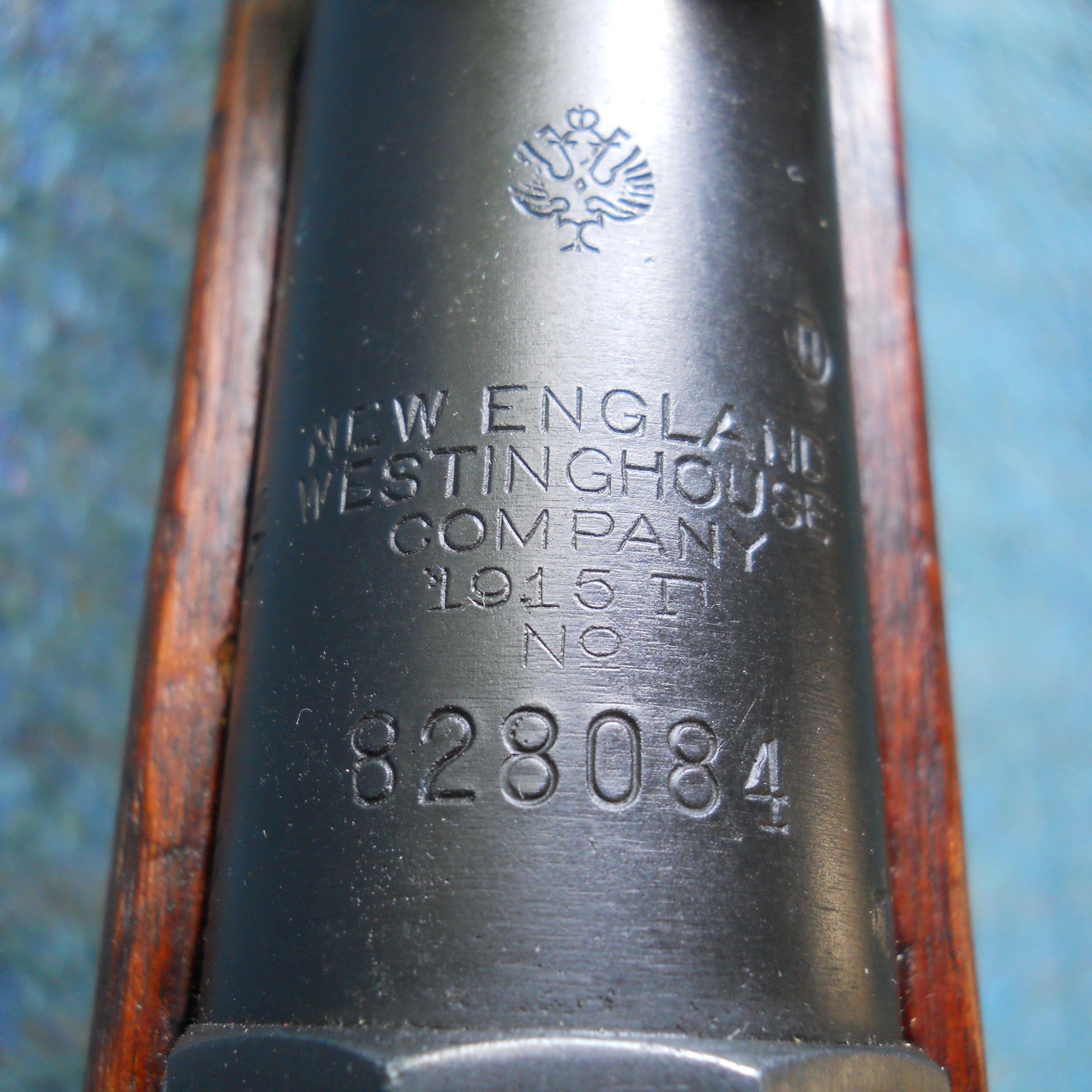
All of the rifles made by New England Westinghouse were marked with the date of “1915,” regardless of the actual date of their manufacture: 1915, 1916 or 1917. Courtesy of the author.
By 1915, the Russians had more men in the lines than they had rifles, and they also had lost thousands of guns in the defeats they suffered by the hands of the German army in 1914. The czarist government turned to America and contracted with both the well-known Remington Arms Co. in New York and a new firm called New England Westinghouse in Massachusetts to make Mosin-Nagant rifles. Remington was contracted to make 1.5 million rifles, while Westinghouse was to produce 1.8 million arms. According to some published sources, only a total of about 750,000 thousand rifles had been produced by Remington prior to the Bolshevik Revolution in 1917, and nearly 470,000 of these had been shipped to Russia.
However, the serial-number range from extant verifiable rifles does not bear out these statistics, as the National Museum of the Marine Corps has a Remington rifle that was supplied by the Russians to the Nicaraguan insurgents in the late 1920s, and it has a serial number in the 562,000 series. Westinghouse alone must have made more than 800,000 rifles, as at least two of them in my former collection, 828084 and 803375, clearly made it to Russia and were subsequently used by the Finns. These rifles were very well-made and had wood stocks of American walnut. The Russians stamped an acceptance mark on the wood buttstock and then issued them as fast as they could.
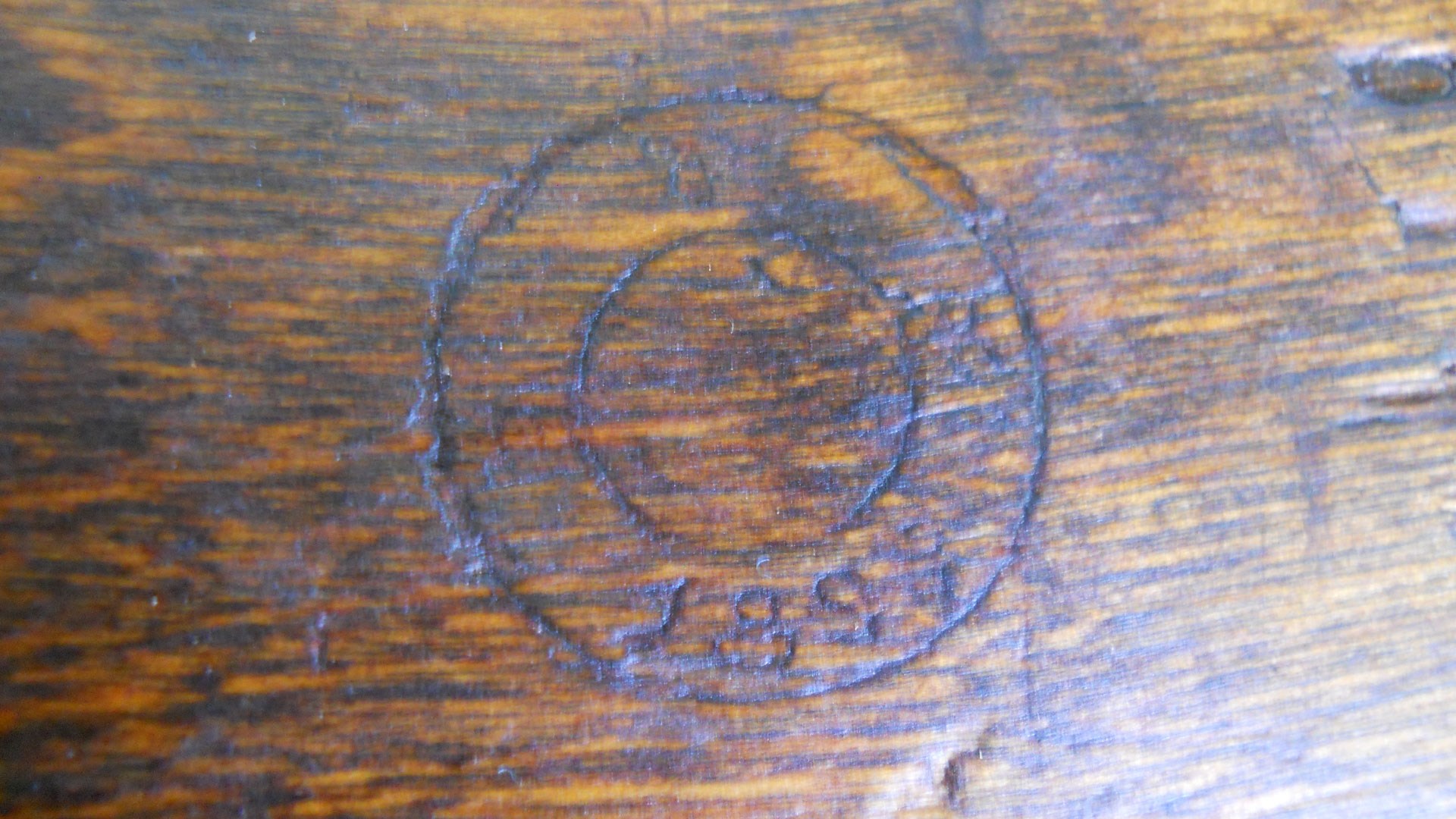
The czarist Russian acceptance stamp in the rifle’s butt stock. Courtesy of the author.
With the collapse of the Romanov dynasty and Russia’s exit from World War I in 1917, the new Russian government refused to pay for any more rifles, so those rifles still in storage in the U.S. were purchased by the American government, marked and issued for recruit training, as its army was expanding exponentially after entering the war earlier that year.
Interestingly, the U.S. government also shipped 50,000 of these rifles to Vladivostock in 1917 to arm the Czech Legion, while also supplying the small American expeditionary forces in both Murmansk and Archangel with Remington and Westinghouse Mosin-Nagants. After the war, most of the rifles still in American armories were sold to civilians under the Office of the Director of Civilian Marksmanship, the forerunner of today’s Civilian Marksmanship Program.
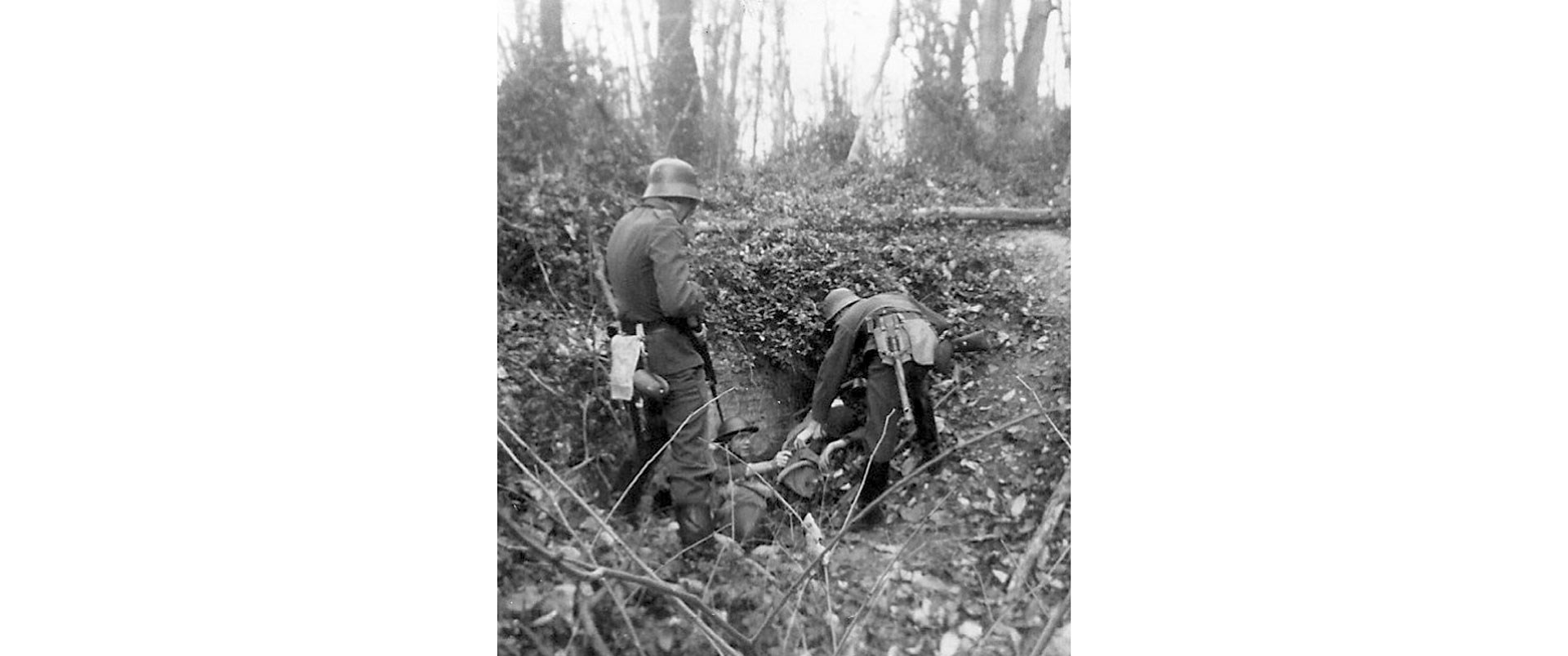
The Russian Army lost thousands of its rifles to its German enemies in World War I. After being captured, some Allied prisoners in POW camps across Germany were guarded by rear-echelon German troops, often armed with captured Russian rifles. Courtesy of Robert Martin.
Meanwhile, the Germans were putting the Russian rifles that they had captured to good use. After marking the buttstock with a “Deutsches Reich” stamp, these rifles were issued to rear-line troops as “substitute-standard” arms, and some were even fitted with an adapter on which an all-metal “ersatz” knife-bladed bayonet could be mounted. The standard Russian bayonet was an épée-style, socket-mount bayonet. While the majority of the rifles were issued to prison camp guards, transportation units and other similar rear-area troops, the German Imperial Navy also received some of them. By 1916, the German forces had thousands of these rifles in its ranks and even had enough of them to spare for one of the most curious episodes in World War I.
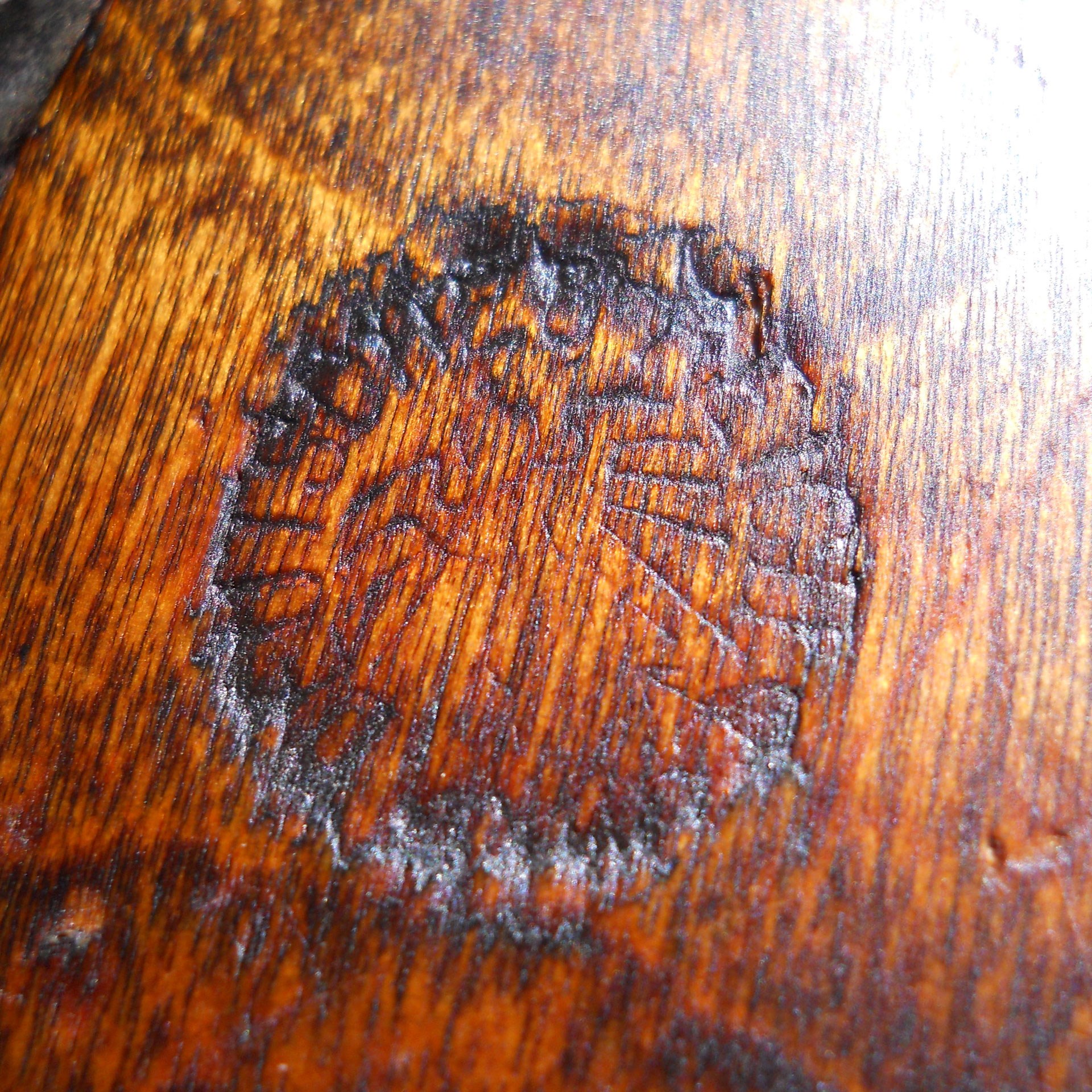
Shown here is the German Imperial ownership stamp applied after its capture from the Russians. Courtesy of the author.
Irish nationalist separatists had been plotting to gain Ireland’s independence from Great Britain for more than a century prior to World War I. Although the British had offered a form of Home Rule to Ireland prior to the beginning of World War I, it was put on hold for the duration of the war. A small group of revolutionaries gained control of the “Irish Volunteers” (a group pledged to support Home Rule by force), and during Easter Week of 1916, the secret Irish Republican Brotherhood fomented a rebellion against the British government. While it fizzled across most of the country, it raged for a week in the capital city of Dublin and reduced much of the center city to rubble.
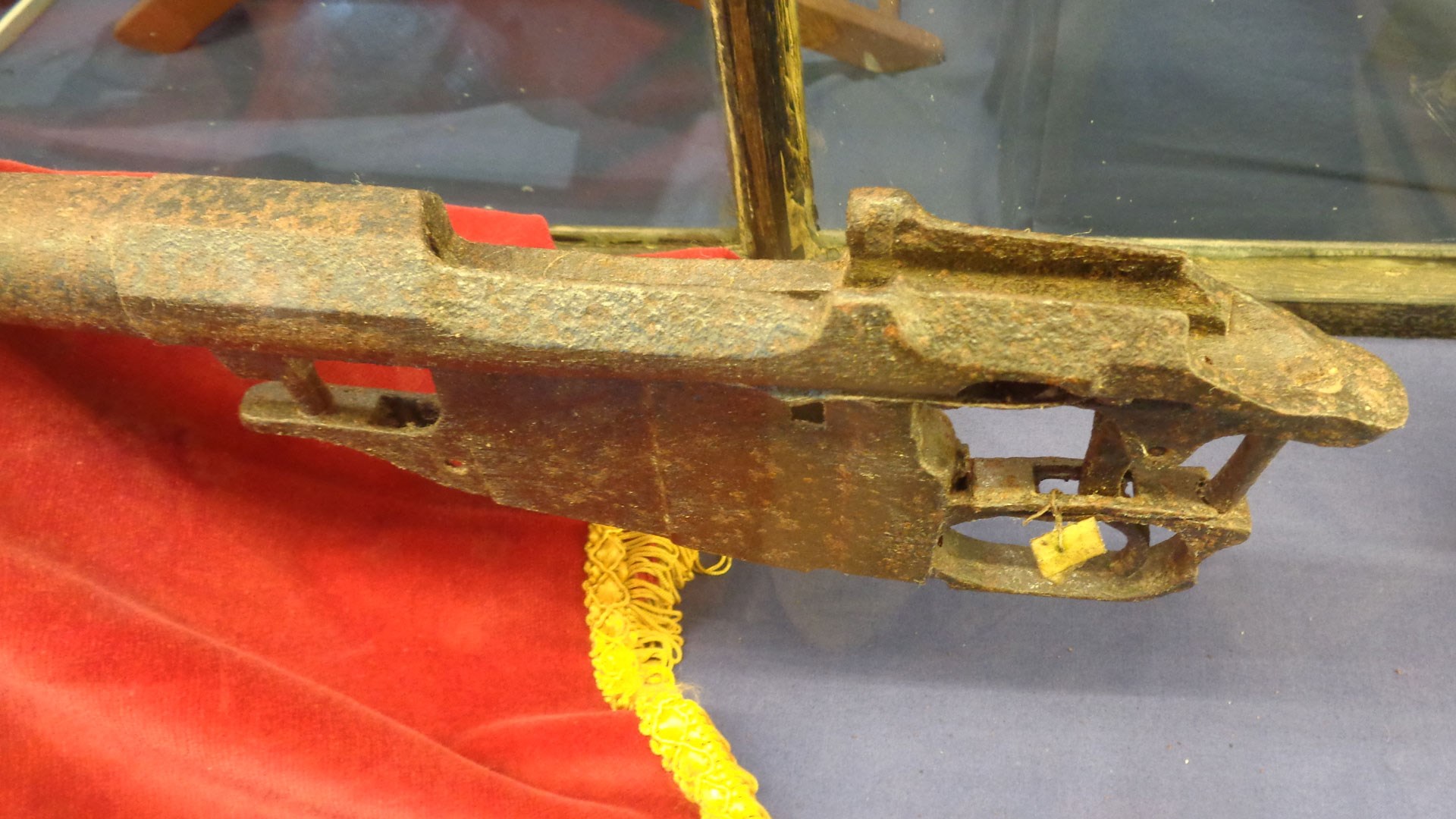
The Germans sent 20,000 of these captured rifles to Irish Nationalists in 1916, but the ship on which they were being transported to Ireland was sunk in Cobh Harbor, near Cork. This is one of the very few rifles recovered from the wreckage, and it is now in the town museum. Courtesy of the author.
The success of the “Easter Rising” across Ireland depended on German support—namely arms, since the Irish volunteers had just a few modern arms and not many more obsolete military rifles and civilian shotguns. At the urging of the Irish revolutionaries (including the famed social reformer, Sir Roger Casement), the German government filled an old cargo ship, the Libau, with 20,000 of these captured, and “twice stamped,” Mosin-Nagant rifles, disguised the ship as a Norwegian freighter and tried to land the guns on the west coast of Ireland a few days prior to the Easter Rising.
However, due to a series of mishaps, the British were able to seize the freighter, now known as the Aud. Its captain scuttled the ship as it was being escorted into Cork Harbor, and all 20,000 rifles, as well as 10 Maxim machine guns and millions of rounds of ammunition, went to the bottom of the harbor, where they, except for a very few examples that were recovered and are now in museums, remain to this day.
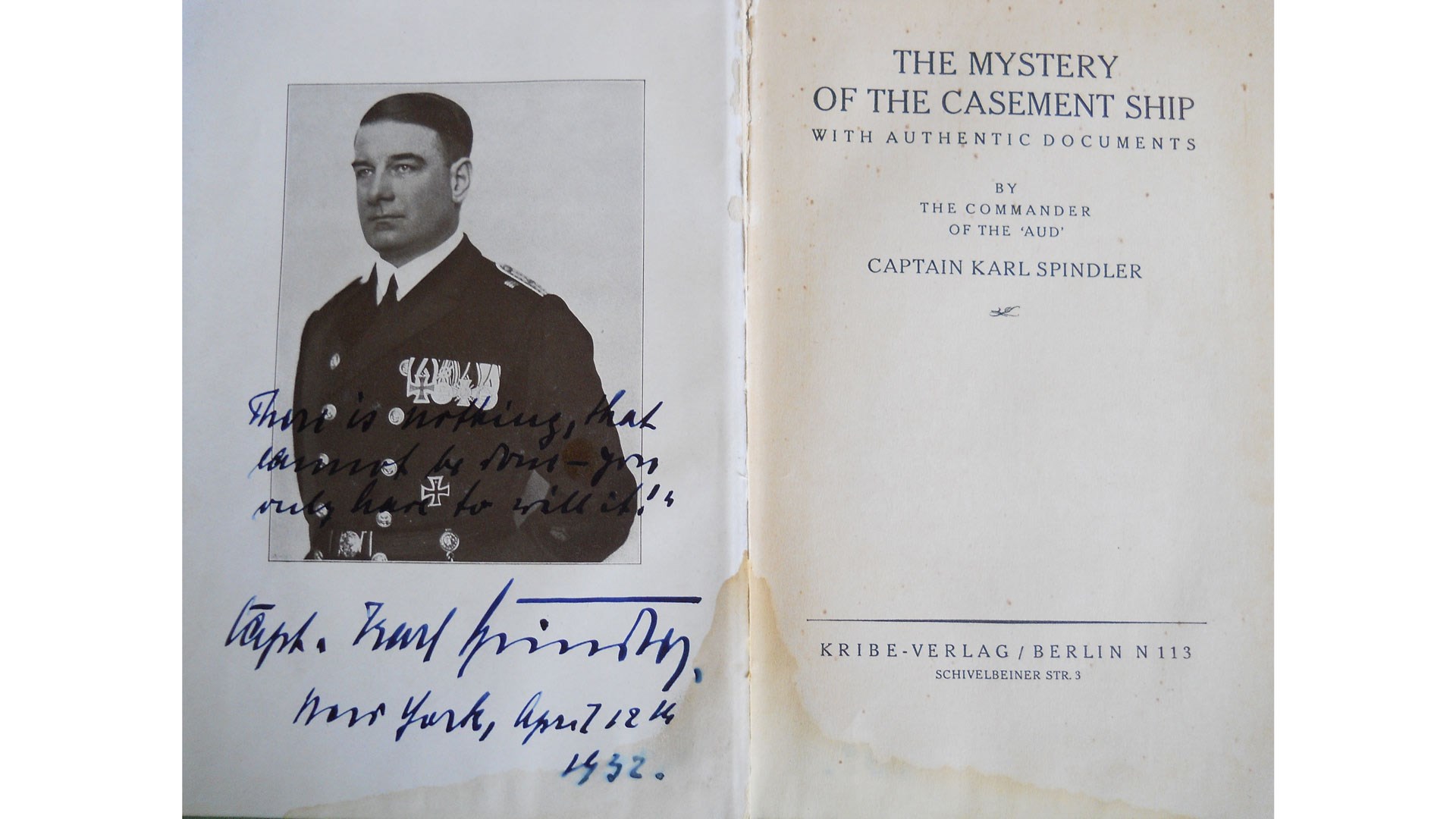
In “The Mystery of the Casement Ship,” the Aud’s captain recounted the efforts to land 20,000 of these Russian rifles in Ireland, prior to the 1916 “Easter Rising.” Courtesy of the author.
By the time of the Armistice in November 1918, Germany had thousands of Mosin-Nagant rifles on hand. Since the Treaty of Versailles only allowed for a small 100,000-man “Reichswehr” army, the German government had no need for an excess of captured foreign rifles, so it sold most of them to Finland in the early 1920s. Finland had finally gained its freedom from Russia during World War I and needed arms to protect its new status as a republic.
The Finns marked the rifles that had been purchased from Germany and issued to its new army with an “SA” (Suomi Armeija, meaning Finland Army) stamp on the breech of the gun, as they also did the rifles that they had captured from the Russians during the Finnish Civil War in 1918. Those rifles acquired for the Finnish Civil Guard were stamped with a capital letter “S” on either the buttstock or the barrel shank, and sometimes with the corresponding number of the Guard district. While most of the captured Mosin-Nagant rifles were Russian-made, some of them, like some of the German-supplied arms, were the American imports from Remington and New England Westinghouse.
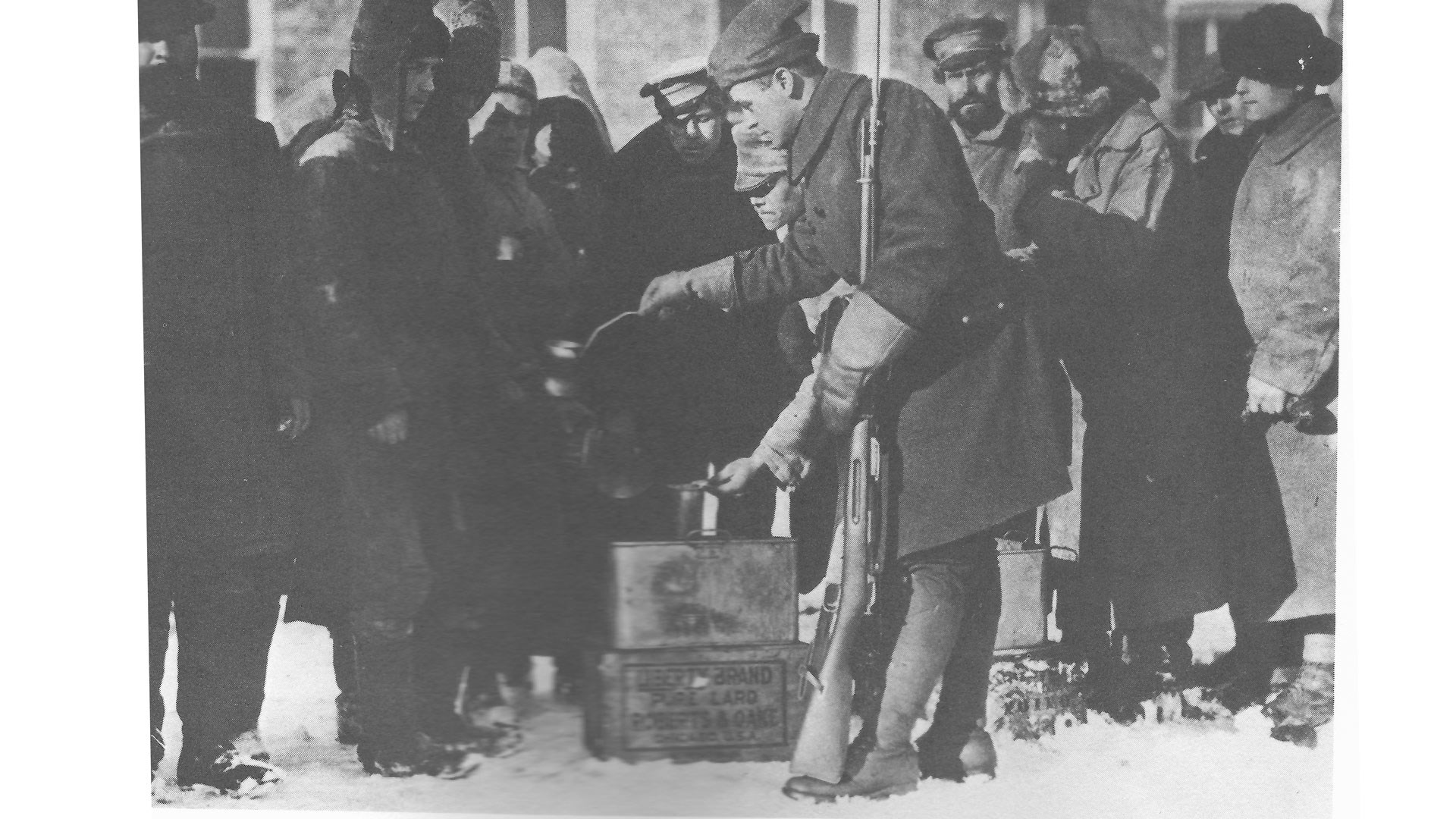
With the fall of the Romanov dynasty in 1917, Russia canceled its contracts with Remington and New England Westinghouse. The U.S. purchased the rifles still awaiting shipment, issuing some of them to recruits for basic training and some to the American forces sent to Russia. U.S. Signal Corps photograph, U.S. National Archives.
A few years later, Soviet Russia supplied Mosin-Nagant rifles to the insurgents fighting with Augusto Sandino against the government forces and the U.S. Marines in Nicaragua. Buried deep in the diplomatic files at the U.S. National Archives, in Washington, D.C., is a Mosin-Nagant rifle that was cut in half and sent to Washington, via diplomatic pouch, by the military attaché in Managua, Nicaragua. He sent it back to prove Soviet complicity in the ongoing battle against the Sandinista rebels.
Another rifle, in the collection of the National Museum of the Marine Corps, validates this assertion, as it is one of the last Remington-made arms to reach Russia during World War I, and it has all the characteristics of a rifle that had been used by the czar’s forces. U.S. Marines captured this rifle during the Second Nicaraguan Campaign, and, very interestingly, it has a Star of David carved into its stock.
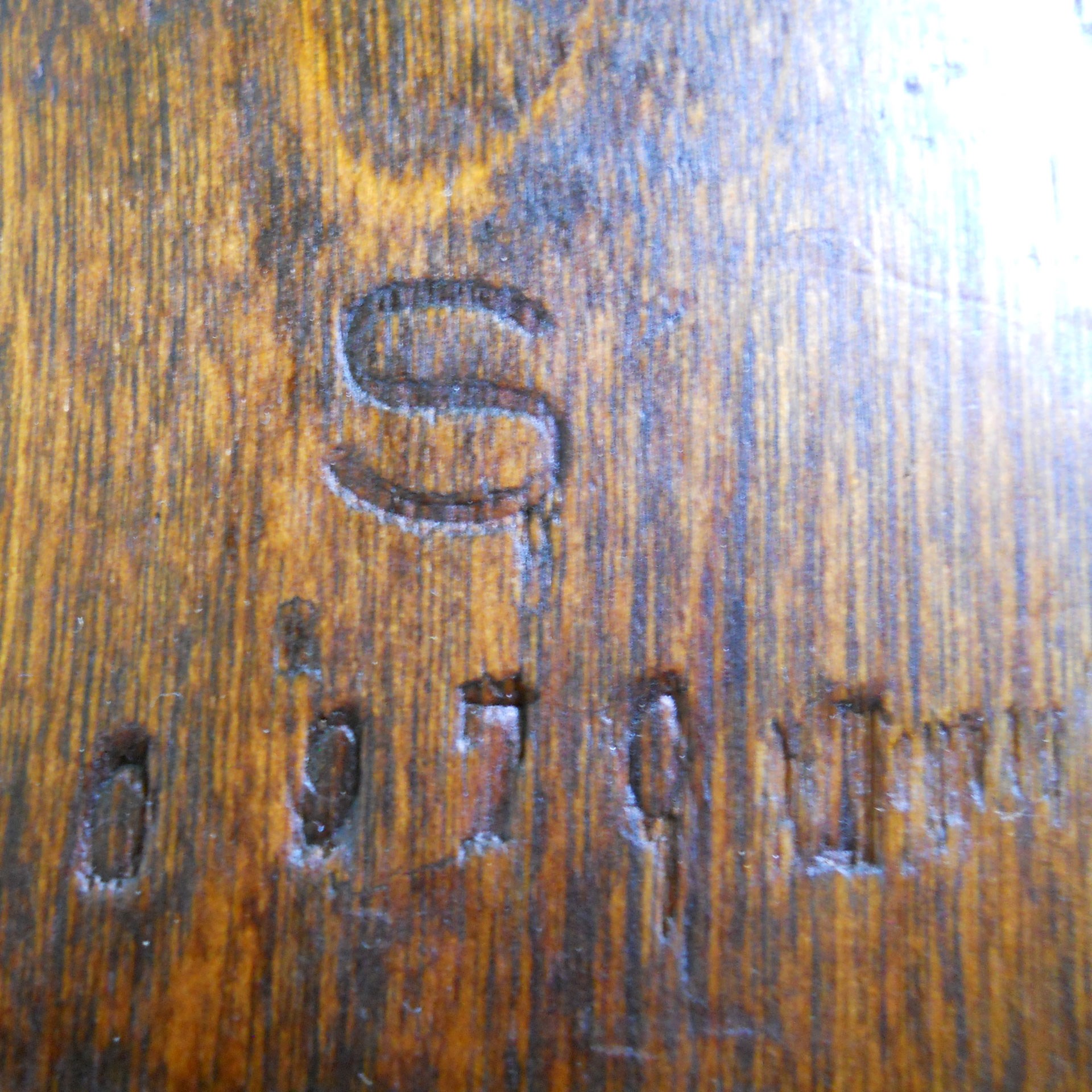
The Finnish Civil Guard marking, with the number of the corresponding district. Courtesy of the author.
When the Winter War broke out between Finland and Soviet Russia in 1939, the Finns had been producing several models of their own version of the Mosin-Nagant, by modifying existing rifles. However, many of the original Civil Guard rifles were pressed into service with the army, and these guns were then marked with the “SA” in a rectangular cartouche.
While some of the captured and purchased Finnish rifles were fitted with new, two-piece birch-wood stocks—characterized by a “three-finger” splice—others retained their original configurations with all of the markings to tell the rifle’s story. Finnish forces carried Mosin-Nagants of all types in the “Continuation War” (the Finnish term for World War II) against Soviet Russia.
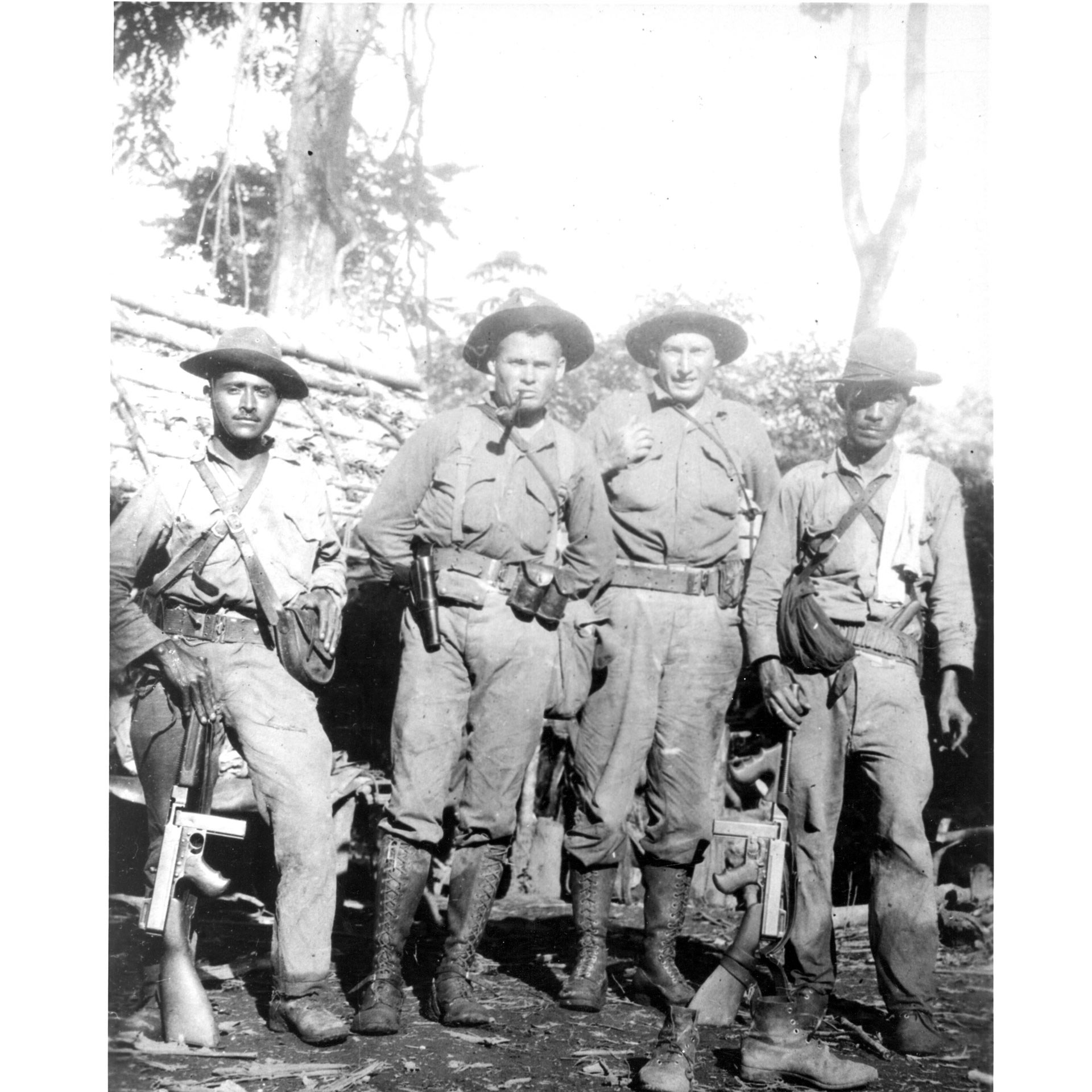
U.S. Marines and Guardia Nacional de Nicaragua (as seen here, with the famed Lewis B. “Chesty” Puller commanding its Company M) faced Sandinista rebels in Nicaragua during the 1920s and 1930s that were, in part, armed by Soviet Russia with Russian Mosin-Nagant rifles—some of them American-made. Courtesy, Marine Corps History Division, Quantico, VA.
So, what tales would my rifle have to tell? It is marked with the New England Westinghouse name, as well as a Romanov czarist eagle, on its breech. It has the czarist acceptance stamp, along with a Finnish Civil Guard marking on one side of its walnut butt stock and a German “Deutches Reich” ownership stamp on the other side of the butt. On the side of the barrel shank it has the Finnish Army “SA” marking, and, finally, a “Century Arms St Albans VT” marking near the muzzle of the barrel. However, it has a Remington-made bolt, marked with an “R” in a circle and a crossed out serial number of “636122” on it, again refuting the claim that only a few more than 470,000 Remington-made rifles arrived in Russia.

The “SA” indicates Finnish Army use. Courtesy of the author.
The rifle could start out by describing the city of Springfield, Mass., where it was made in 1917 when America was either on the brink of war with Germany over the resumption of unrestricted submarine warfare and Mexican intrigues or had just entered the war on the side of the Allies. Site of the first U.S. arsenal founded in the 1790s, the city was also home to the well-known Smith & Wesson firearms company, while the Ames company, a longtime supplier of swords, knives, bayonets and more to the U.S. government, was located in a nearby town, Chicopee Falls. Other private arms companies that supplied the federal government during the War Between the States were also located there.
The rifle could then tell of the harrowing sea voyage across the Atlantic, through the U-Boat blockade to one of Russia’s arctic ports, where it was unloaded for the armies of the czar. It could then tell of the conversations between the Russian soldiers huddled around a campfire on the Eastern Front, most likely somewhere between the Baltic coast and Galicia, while they discussed the breakdown of the Russian army and the political upheavals back home.

Finnish soldiers used Russian rifles alongside their own versions of the Mosin-Nagant rifle in the 1939 Winter War with Soviet Russia. Courtesy SA-Kuva, Finnish National Archives, via Tom Laemlein.
The next set of stories could be about guarding captured Russian, French, British or American prisoners of war, or perhaps the dreary duty of guarding supplies along a railway siding in Germany. The rifle may have seen service during the German navy’s mutiny in late 1918, or could have been caught up in the fighting between the Spartacists and the Freikorps during the German civil war following the end of World War I. After arriving in Finland, it could tell about the life in a small Finnish town, while a Civil Guardsman owned it in the 1920s and ‘30s.
The rifle could then tell of the brave resistance of the Finns when Soviet Russia invaded their country in the bitter cold of 1939 and also tell of long service during the ensuing fighting on the Finnish border with Russia from 1941 to 1944. Somewhere along the line, it could tell about the circumstances that led to its bolt being replaced with one from another American-made rifle.
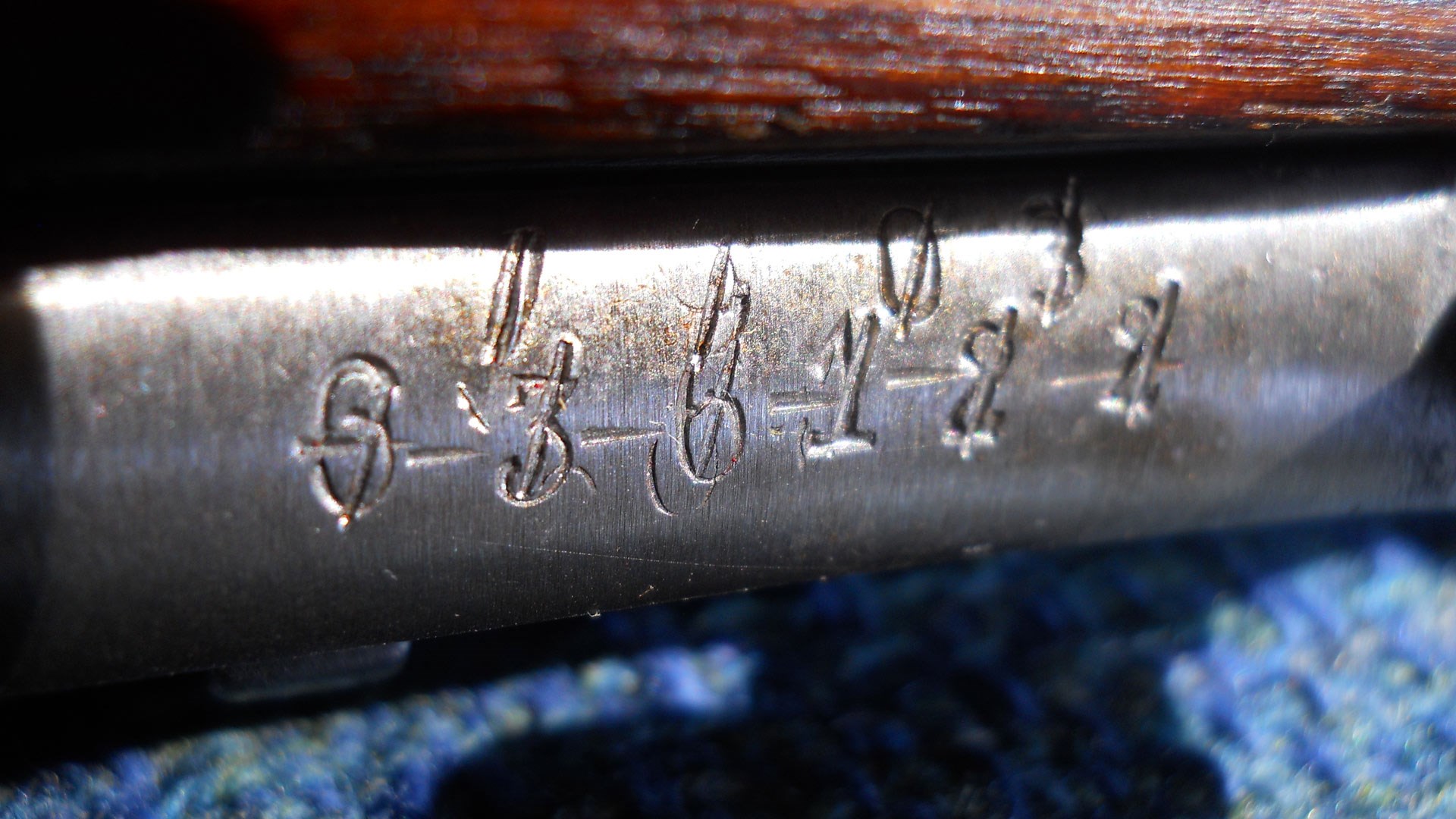
The Remington-made bolt is marked with a serial number of “636122”, but the numerals have been lined out at some point in its service. The bolt on the Mosin-Nagant from Nicaragua in the Marine Corps Museum’s collection is also marked like this. Courtesy of the author.
Finally, the rifle could tell of its voyage back to America in the 1990s, after the American Gun Control Act of 1968 was amended to allow the importation of Curio & Relic arms once again into the country. The rifle ended up in northern Vermont, just a little more than two hundred miles away from its birthplace, before coming to a gun store in southern Virginia, and eventually, to my home. However, its most poignant, or disturbing, story would be about the four notches carved in its upper hand guard, representing the possible four combat “kills,” sometime during its service life.
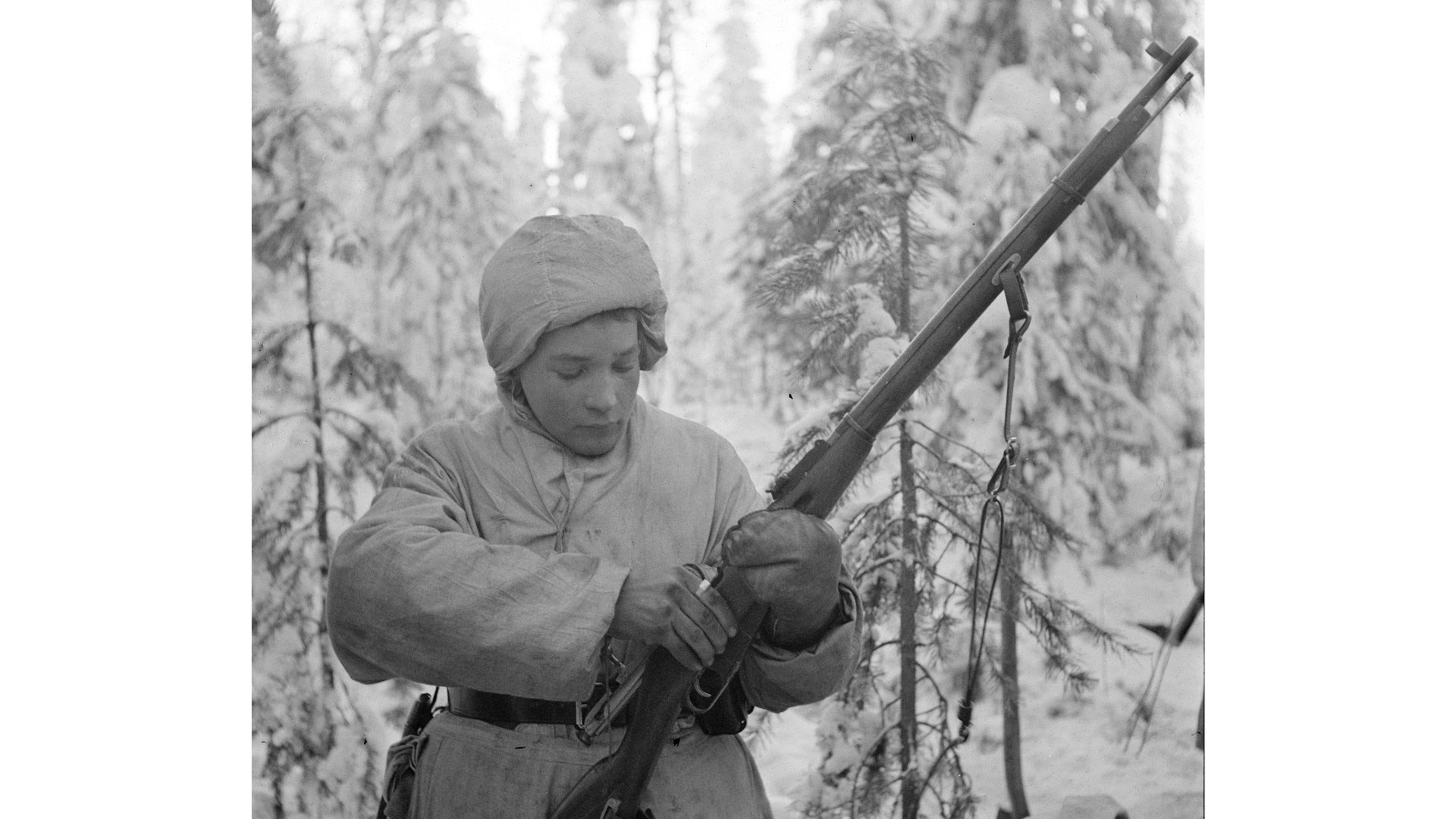
The Mosin-Nagant’s magazine holds five 7.62×54 mm R cartridges, which are loaded into it using a stripper clip. Courtesy SA-Kuva, Finnish National Archives, via Tom Laemlein.
Although guns can’t talk and can’t actually tell their stories, we, as collectors, can figure out their stories, and use these objects as tangible touchstones to the past, in order to illustrate the drama of history in our collections and in our exhibits at arms shows and in museums. All too often, firearms are displayed in museums with labels that read like, “Standard Russian infantry rifle of World War I, Caliber 7.62mm, Wood and Steel, Catalog Number 1983.6.1”, with no interesting story or context, or they are not included in a personal collection or a firearms show display because the gun is “atypical” of the subject. However, as this gun’s story has unfolded, it is obvious that it deserves a place among other firearms that, at first glance, one would not consider.

Other Finnish rifles have been reported with “kill notches,” and sometimes with initials carved into their stocks. Carving names and initials on rifle stocks was also prevalent among the Boers during the Boer War, as well as with Confederates during the American Civil War and with Irish volunteers during the Easter Rising. Courtesy of the author.
For instance, this M1891 rifle could be included in any collection of “New England” or “Springfield” arms, and obviously in a collection of “Russian” firearms, or “World War I” guns. It could also hold a place in any collection of “German” arms, and “Winter War” and “World War II” rifles. Likewise, it could also be used to support an exhibit on the German submarine blockade of World War I, the Atlantic convoys system, the German navy mutiny of 1918 and the German civil war.
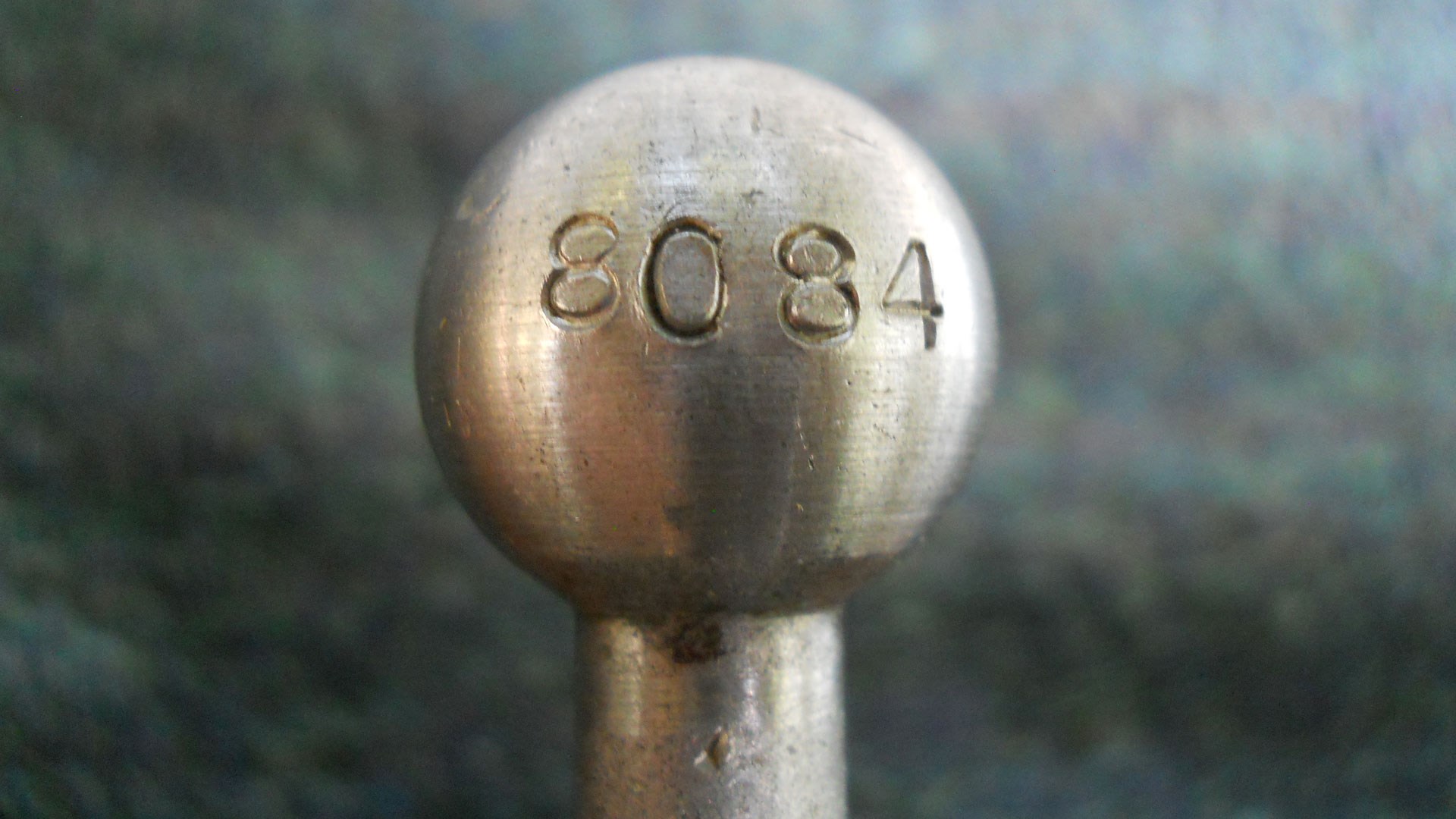
The bolt knob has had the last four digits of the original serial number applied to it, perhaps by its American importer. Courtesy of the author.
In a broader context, and using it as a “typical example” (but known not to be the case), it could have validity as an example of the guns that were sent to Ireland in 1916, like the position it had held in my former collection, due to its being “double-stamped.” Although the rifle has Finnish markings on it, it could still serve as an example of the guns that were used against U.S. Marines in Nicaragua in any collection of “USMC Arms”, and even without “U.S.” property stamps, it would not be out of place in a display of “Arms of the American Expeditionary Forces,” as long as the artifact label in a display read “rifles like this were used to train the AEF.” Even though we know it not to be the actual history of the gun, it could still serve as an example of the arms carried by the AEF’s “Polar Bears” in Russia at the end of World War I and on into the Russian Civil War—as it does now in its current home.
Thus, the answer to the question of whether or not to acquire another gun for your collection depends on how far you can “think outside the box” and justify its acquisition. Happily, for most of us, we don’t have to work too hard on this, and if you have a wad of greenbacks in your pocket and an empty space in your gun rack, you should consider getting another gun, if the price is right and it piques your interest!
The author’s Mosin-Nagant rifle was featured in the NRA’s “American Rifleman” television show about the “Guns of 1914” that aired in 2014. Still accurate, it hit a 12”-diameter steel gong target at a range of 150 yards, on its first shot, when fired in front of the video camera from the off-hand position.
This article is largely drawn from “A Peregrinating Rifle” in the International Committee of Museums and Collections of Arms and Military History’s online ICOMAM Magazine, December 2015.
The author thanks Al Houde, Tom Laemlein, Robert Martin, Phil Schreier and the editorial staff of the American Rifleman magazine for their assistance in the preparation of this article.



:quality(70)/cloudfront-us-east-1.images.arcpublishing.com/cmg/FFFYJMXDONPR5KCZLX7W6ONCFQ.jpg)
NEW YORK — (AP) — A New York judge on Monday banned Wayne LaPierre, the former head of the National Rifle Association, from holding a paid position with the organization for a decade, but declined to appoint an independent monitor to oversee the gun rights group.
The split decision from Judge Joel Cohen came on the final day of arguments in the second stage of a civil trial brought by New York Attorney General Letitia James.
The first phase of the trial, decided in February by a Manhattan jury, found LaPierre and another deputy liable for misspending millions of dollars on lavish trips and other personal expenses.